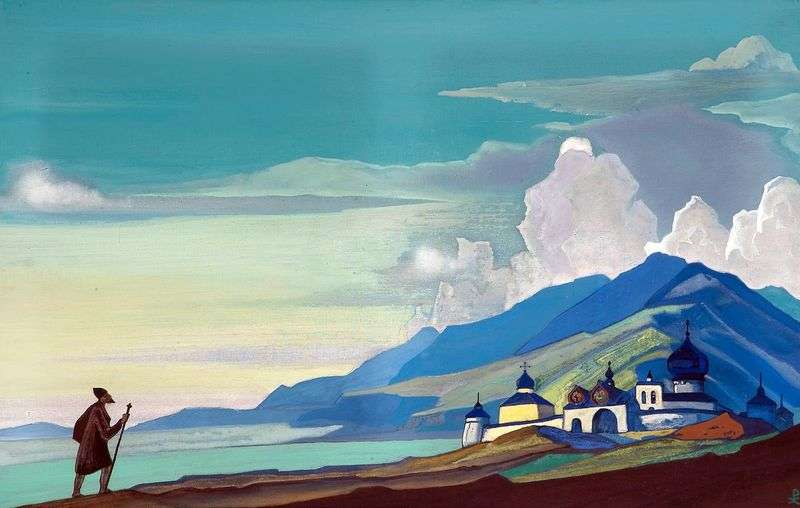
In the Museum of Nicholas Roerich in New York is stored a wonderful painting “Wanderer of the Light City”, written by the artist in the thirties of the twentieth century. The picture is quite remarkable from the point of view of the features of composition, color painting and complex metaphor of images.
The central image of the canvas is understandable, but at the same time hidden, half-rival, symbolic. The figure of the wanderer is compositionally removed from the image of the City of Light. Before us is a wanderer with a bag on his shoulders and a staff. The dark figure of the traveler in sharp contrast appears on the background of the general “lightness” of the background.
The outlines of the wanderer are indistinguishable, summarized in a single color tone. From his dark figure breathes, comes a feeling of heaviness, fatigue, combined with the general feeling of hope associated with the finally achieved light image of the Holy Temple. “What is this road if it does not lead to the temple?” And, indeed, the long wanderings and spiritual quest of the hero led him, finally, to a beautiful bright monastery of white stone. This monastery is reminiscent of the image of some great holy place, a real heavenly city, which is hidden from accidental gazes somewhere in the depths, among the boundless beautiful mountain spaces. The whole image of the monastery, the mountains and the sky merges into a single motive of holiness, the motive of wandering and seeking the spirit, the motive of the search for this eternal and difficult road to the Temple.
The spiritual image of a wanderer pierces our understanding and feelings with a depth and great strength of mind. The wanderer is unshakable in his striving, in his wondrous faith and fortitude. In addition, the canvas has not only deep semantic contrasts, but also has a special color-painting or color, reflecting and in its own way reinforcing the whole of this spiritual component of this pictorial work of Roerich.
The picture is written by the author in a tempera manner, which emphasizes softness, dullness of colors, the absence of artificial gloss and rewritten images. The work is implemented mainly in the cold range. Lemon shades of yellow dilute the strict bluish-cool color, softening it and filling the excess cool with sunny pieces of this complex color collage. In the painting “The Stranger of Bright City” the sky has a complex multi-layered structure.
The contrast of warm and cold blocks is smoothed out by the ghostly fancy images of pale clouds and greyish pink mists. All this is mixed in the pre-dawn air with fresh multi-colored paints, either elusive or growing with a new force. The boundary of the transition from the sky to the image of mountain peaks is implicit and conditional. The sky and the mountains unite in a single exalted impulse. Blue mountains breathe cold and mist, protecting and guarding the Light Hail from all small, vain, transient. The temple, this Holy city looks clear continuation of these so inaccessible values of the sky and mountains.
The image of the Bright City, therefore, serves as the key, since it is here that the powers of the spirit unite and converge. Bright City could arise only among the high sky and the great mountains. The hero of the canvas was able to feel these high images of the sky and mountains, because it was they who led the wanderer to the Bright City.
 And we carry the light by Nicholas Roerich
And we carry the light by Nicholas Roerich Saint Sergius of Radonezh by Nicholas Roerich
Saint Sergius of Radonezh by Nicholas Roerich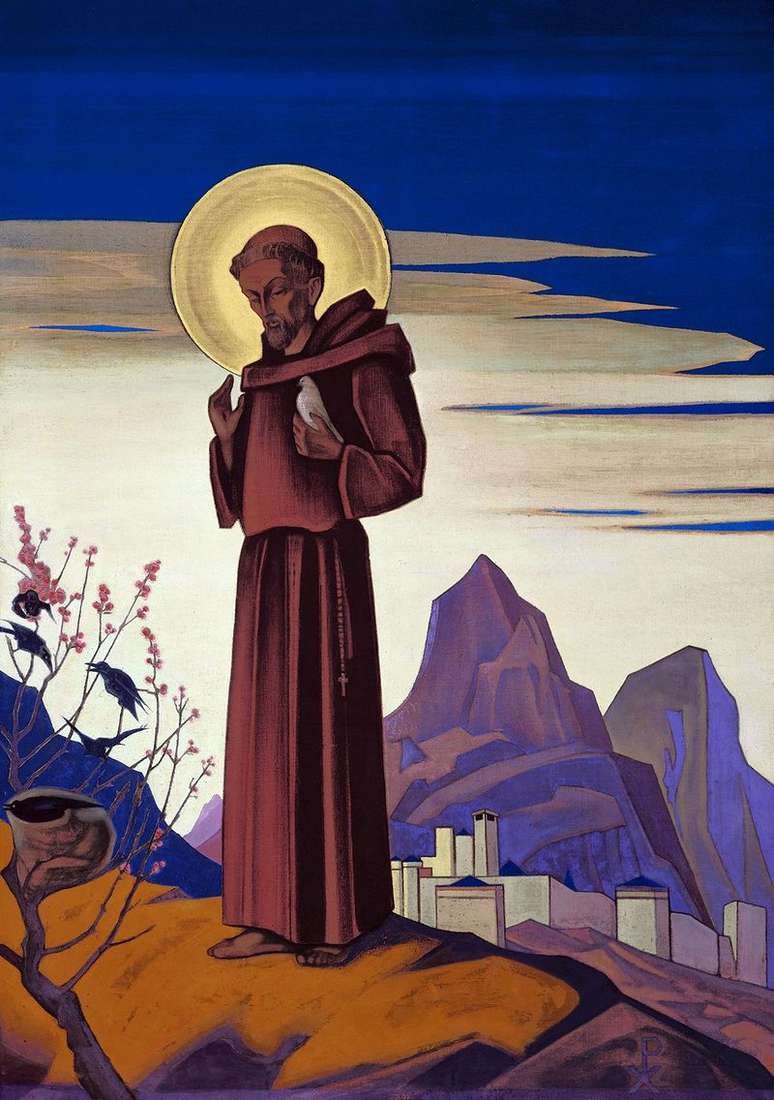 Saint Francis by Nicholas Roerich
Saint Francis by Nicholas Roerich Kanchenjunga by Nicholas Roerich
Kanchenjunga by Nicholas Roerich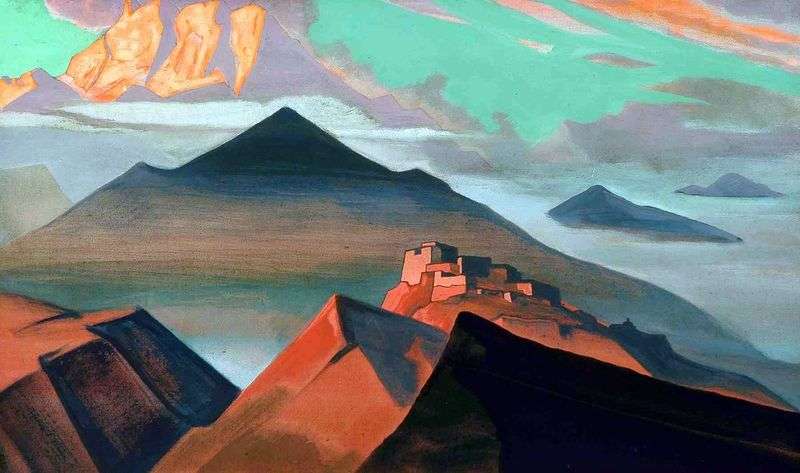 Tent Mountain by Nicholas Roerich
Tent Mountain by Nicholas Roerich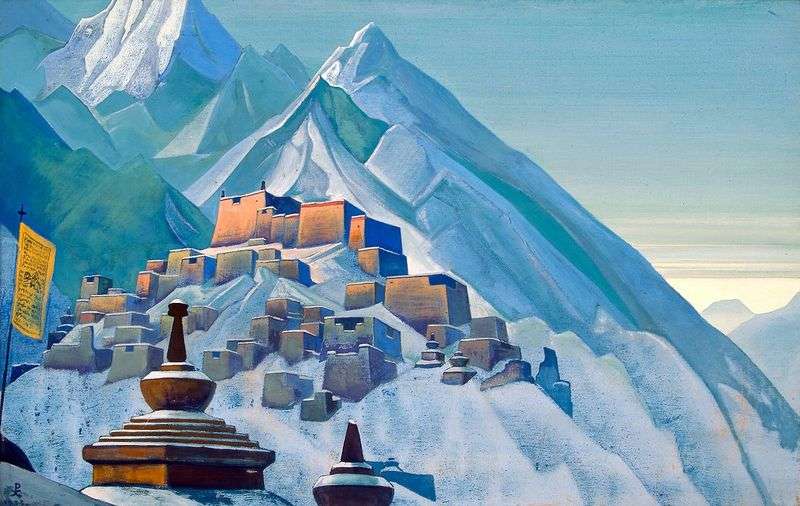 Tibet. Himalayas by Nicholas Roerich
Tibet. Himalayas by Nicholas Roerich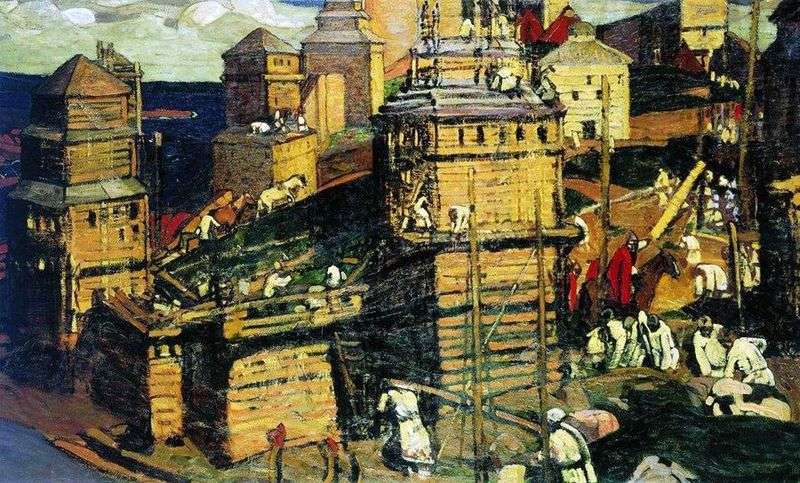 The city is being built by Nicholas Roerich
The city is being built by Nicholas Roerich Pink Mountains by Nicholas Roerich
Pink Mountains by Nicholas Roerich